
Cold fusion — the largely discredited science of making more energy from less — may be making a comeback.
Controversial yet high-profile demonstrations in Italy last month purported to show a cold fusion device turning 400 watts of heat power into 12,400 watts. The eye-popping 31-fold increase — also known as an “excess heat effect” — illustrates why lay observers say cold fusion is the “holy grail of energy independence” and why many scientists doubt, some to the point of apoplexy.
Twenty-two years ago, University of Utah chemist Stanley Pons and University of Southampton chemist Martin Fleischmann made similar but ultimately unreproducible claims that turned their 15 minutes of fame into banishment from the scientific community.
Since he’s only seen second hand accounts of this latest project, University of Missouri Vice Chancellor for Research Robert Duncan, Ph.D., an expert in low-temperature physics, said he “can neither criticize nor endorse” it.
“But I do know that excess heat effects are real, and although we do not fundamentally understand their origins, the world’s scientific community would be remiss if it does not seriously pursue these fascinating new observations,” Duncan told TechNewsWorld.
The Italian Project
The reactor demonstrated in Italy is the brainchild of University of Bologna physics professor emeritus Sergio Focardi, Ph.D., and Andrea Rossi, who manufactures biofueled electric generators at his Bedford, N.H.-basedLeonardo Corporation. It reportedly fuses nickel and hydrogen atomic nuclei at room temperature, producing copper — and copious energy.
The process is also green, giving off neither coal-fired carbon dioxide nor radioactive waste, the two men said at a standing-room-only January 14 demonstration/press conference in Bologna. A nuclear physicist associated with the ItalianNational Institute of Nuclear Physics, Giuseppe Levi, examined the procedure and told reporters he was 100 percent convinced.
“Very few researchers in this field have ever claimed the ability, let alone tried, to demonstrate an effect like this on demand,” New Energy Times (NET) publisher Steven Krivit told TechNewsWorld. “Given that, there is probably something very real about the Rossi claim, and there are probably some aspects that don’t hold up.”
From this month’s International Conference on Condensed Matter Nuclear Science in Chennai, India, where buzz about the Italian project was everywhere, industry observer Jed Rothwell said, “the claims are very important, and I think it is very likely they will be confirmed.”
Commercial reactors that would make energy for less than one US cent per kilowatt hour — far cheaper than competing sources — will ship in three months, Focardi and Rossi said.
That is “a major reason for the intense interest,” explained MU’s Duncan.
“Pons and Fleischmann only had a laboratory model, but Focardi and Rossi are claiming immediate commercial viability,” he noted.
“If the results are confirmed, they are indeed a huge step toward commercialization,” Rothwell — who runs LENR-CANR.org, a comprehensive library of cold fusion research — told TechNewsWorld.
Attempts to contact Focardi and Rossi were not successful.
King Caution
Despite all the excitement — online chatter and news reports about the demo still haven’t died down — “the history of the cold fusion controversy teaches us that caution is king,” said New Energy Times’ Krivit.
Ever cautious, peer-reviewed journals and a patent examination have rejected the claims. The Rossi-Focardi reactor, the patent examiner wrote, “seems to offend against the generally accepted laws of physics and established theories.”
Undeterred, the researchers have turned to options unavailable to Pons and Fleischmann, including a digital dandy: their own online Journal of Nuclear Physics, which they’ve staffed with an advisory board that includes Naval Postgraduate School physics professor Michael Melich, Ph.D.
The eyebrow-raising move has met with only mild condemnation, however, partly because evolving attitudes have thawed the ice around cold fusion since 1989. The science even has a more respectable name: “low energy” or “chemically assisted nuclear reactions” (LENR-CANR).
“Fleischmann and Pons really did discover something nuclear, but it doesn’t pass the ‘duck test’ for fusion,” NET’s Krivit explained. “It’s far more accurate and scientific to call the set of phenomena ‘low-energy nuclear reactions.'”
Old Prejudices, New Techniques
Alongside the nomenclature change, serious scientists want to re-examine old prejudices with new, more sophisticated methods.
“An unprecedented and widespread failure of the scientific method is partly to blame for the failure of Pons and Fleischmann,” explained MU’s Duncan, a former director of the Los Alamos National Laboratory Institute for Advanced Studies. “It made sense to question their results, but only insofar as the methods of the day were capable of reproducing them.”
SRI International electrochemist Michael McKubre, Ph.D., has sought better techniques to check the Pons-Fleischmann approach, which reacted deuterium — a close hydrogen relative — with the metal palladium instead of hydrogen and nickel.
Along the way, McKubre, “a very respected scientist,” Duncan said, has observed some critical experimental challenges researchers will have to overcome before they can even try to reproduce past experiments.
The Icy Cold Journey of Julian Schwinger
McKubre isn’t the only respectable researcher to tackle cold fusion in recent years, Duncan added. Osaka University physics professor emeritus Yoshiaki Arata, who in 2006 received Japan’s highest honor, the Order of Culture, reported excess heat effects with palladium nanoparticles.
Particularly remarkable was the (decidedly chilly) cold fusion journey of Julian Schwinger, who with Richard Feynmann and Shinichiro Tomonaga won the 1965 Nobel Prize in Physics for one of the greatest ever physical theories, quantum electrodynamics or QED.
After studying the Pons-Fleischmann experiments, “Julian had a theory that a process tantamount to cold fusion was occurring, but even as a Nobel laureate, he couldn’t get reputable journals to publish it,” Duncan told TechNewsWorld.
“My first attempt at publication was a total disaster,” Schwinger recalled during lectures and seminars. He had devised a hypothesis about the effect “to suggest several critical experiments,” but because cold fusion had become what Duncan calls a “pariah science, poison to all who touched it,” Schwinger — graduate advisor to four other Nobel laureates who also won the U.S. National Medal of Science — was summarily ignored.
“What I had not expected was the venomous criticism, the contempt, the enormous pressure to conform. Has the knowledge that physics is an experimental science been totally lost?” he wondered.
“Temporarily misplaced” perhaps, Duncan said, urging that scientists leave peer pressure behind and return to their methodological roots.
“Cold fusion, or low-energy nuclear science, has benefited from exciting innovations and outstanding minds, yet massive, destructive ‘group think,’ has given it a checkered past,” Duncan explained. “Now, however, it is of paramount importance that science proceed boldly, with a determined yet dispassionate focus, on the objective study of these fascinating phenomena.”

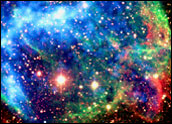

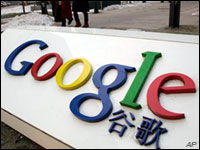
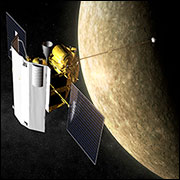

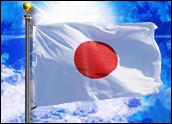


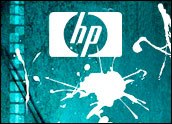












































If this cold fusion Project is real and goes into production on mass scale, what are the worst negative ramifications to the world economy?
To the countries producing more oil than they consume to sell on the world market?
The big oil and coal companies?
World currencies?
World and Nation stability and political environment?
How far will those in power go to stop this project?
Dobermanmacleod:
I read someplace that they will have a plant in Greece to produce the units for Europe, and a plant in the USA for the USA units, at some plant in New Hampshire. But I still believe the cost of water used to get electricity has not been added in to the cost of electricity. They mention 1 cent per KWH, but that is the energy output. To get electricity one normally uses the heat to run a turbine which is around 30 to 38% eff, and the turbines consume a lot of water.
My first estimate of the cost of water for cold fusion may be high. Assuming they produced 15kw/hr of energy with a 30% eff. factor to get electricity, 793 gal of water/hr for 15 KW/Hr of energy, and a cost of /$.61/748 gallons of water, the cost of the water/KWH of electricity comes to $.15.
The cost of the water is still expensive. 15 times as much as the $.01/KWH that the article says is the cost of electricity from this cold fusion system in Italy.
cold fusion by Mike Martin
The cost of water used has not been added to the 1 cent/KWH. If they use 793 gallons per 4.5 KWH of electricity, and if water costs $2/1000 gal, then the cost for the water used per kwh is $.35/KWH. Not cheap.
Mike Martin, or anyone else: What is the cost of water/KWH???
When an actual product comes out that people can USE. All the talk for decades, so what? Make something practical instead of asking people to look.
For those skeptics who can’t quite believe that a cheap clean and abundant energy technology is about to emerge on the market: check out this unclassified US Defense Intelligence Report from November of 2009. DIA-08-0911-003 (google it) from November of 2009 shows clearly that whatever physical reaction is producing the heat, it isn’t just a pipe dream. According to those Italian inventors units are currently being mass produced in America and exported to Italy for sale before the end of this year. Predictably, once consensus reality comprehends that this is not only practical, but very very cheap and (even better) a decentralized way to produce power, you will see gigantic strides made in terms of economic and psychological integration.